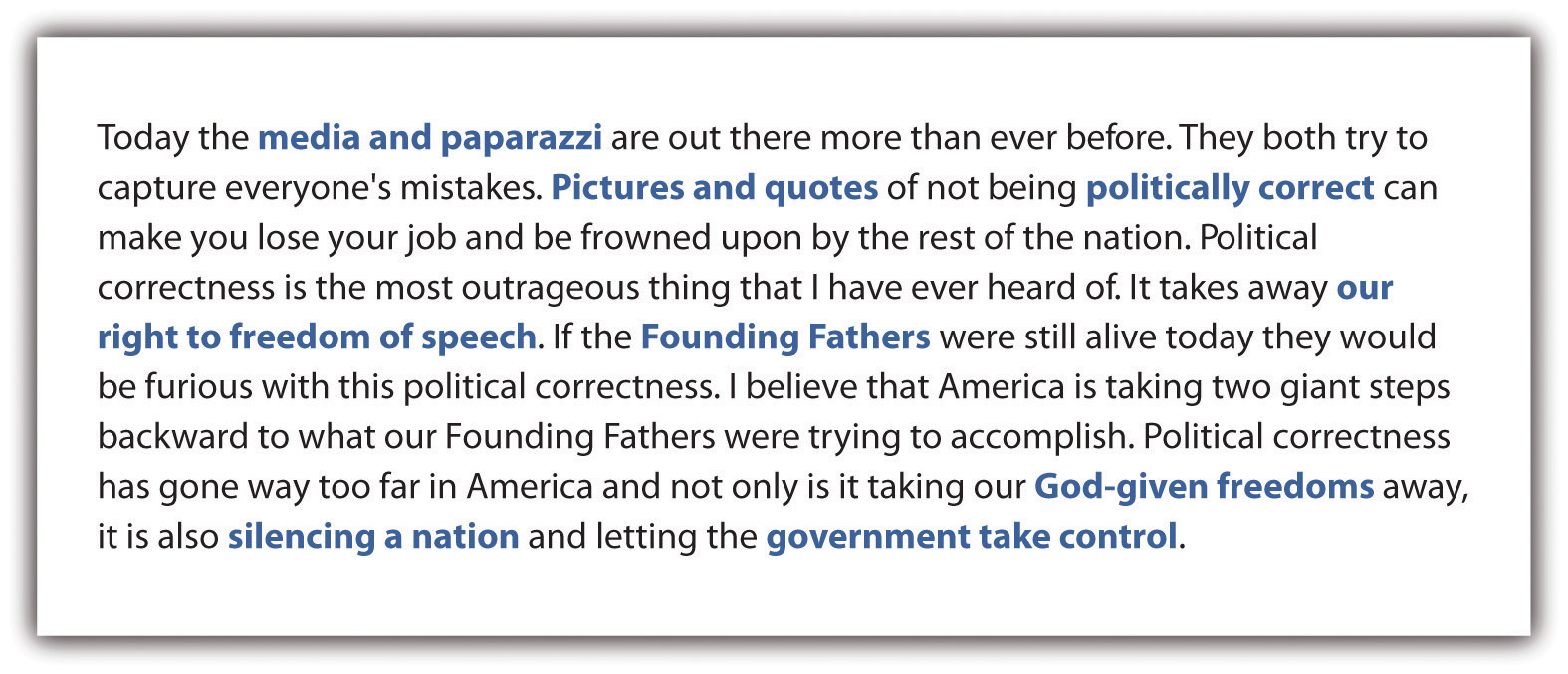We live in a culture that values taking a stance, having an opinion, making a judgment, and backing it up with evidence. Being undecided or even open-minded about an issue can be seen as a sign of weakness or sloppiness or even as a moral or ethical failing. Our culture also privileges action over the kind of reflection and contemplation this chapter is advocating.
If you’ve encountered mostly traditional writing instruction, you’ve probably been encouraged to make judgments fairly early in the writing process. Well before you have fully examined an issue, you’ve been told to “take a position and defend it.” You might make an effort to understand an issue from multiple sides (a process discussed in more detail in Chapter 3 "Thinking through the Disciplines", Section 3.2 "Seeing and Making Connections across Disciplines" and Chapter 3 "Thinking through the Disciplines", Section 3.3 "Articulating Multiple Sides of an Issue") only after you have staked your claim in a half-hearted effort to be “fair to both sides.”
If you’ve been subjected to standardized tests of writing ability (often key factors in decisions about college acceptance and placement and earlier, in assessments of competence at various levels of K–12 education), you’ve probably noticed they rely on essay prompts that put heavy emphasis on argumentation. Some evaluative rubricsA chart with specific domains (or criteria) and scoring norms used to evaluate the quality of something (e.g., a piece of writing). for such essays require the presence of a thesis statement by the end of the introductory paragraph in order to earn a high score for organization.
Here’s an introductory paragraph of a student writer who has been trained by the “point–counterpoint” culture of sound bites and perhaps encouraged by writing teachers over the years to believe that he has very little time to get to his thesis statement.

The rush to judgment has caused this student to fall into the same quick-thinking trap of the student in Section 1.3 "Slowing Down Your Thinking". The remedy (isolating the phrases worthy of further examination, indicated here, as in Section 1.3 "Slowing Down Your Thinking", with bold blue font) is similar. This student may yet make something useful out of his concerns about political correctness, but he will do so only by making a meaningful effort to withhold his judgment on what is actually a much more complicated issue.
| Premature Judgment | Complicating Question |
|---|---|
| “Media and paparazzi” | What is the press’s motivation for insisting on political correctness? |
| “Pictures and quotes” | What examples can I find as test cases for analysis? |
| “Politically correct” | What is the definition and the history of this phrase? |
| “Our right to freedom of speech” | How does political correctness run counter to the First Amendment’s protection of speech? |
| “Founding fathers” | Did the founders debate matters of press freedom and appropriate speech? |
| “God-given freedoms” | What are the intersections between religion and the right to free speech? |
| “Silencing a nation” | Are there sensitive subjects we don’t address as a nation because of political correctness? |
| “Government takes control” | How might a government create an atmosphere of political correctness in order to control its people? |
Much of the pressure to reach judgments prematurely comes from elements of society that do not necessarily have our best interests in mind. The last exercise of Section 1.3 "Slowing Down Your Thinking" hinted at the strategic reasons why corporations, politicians, ideologuesA person with an inflexible, often extreme position or ideology through which the entire world is viewed., popular entertainers, authority figures, or even friends and family might try to speed up your thinking at precisely the moment when you should be slowing it down. While inaction and dithering can be cited as the cause of some of history’s worst moments, the “rush to judgment” that comes from rash thinking can be cited as the cause of many more. A good rule of thumb when you are asked to make an irrevocable judgment or decision is to ask yourself or your questioner, “What’s your hurry?”
Compare the pace with which a writer makes a judgment in the each of the following rhetorical settings. Discuss whether you think there are certain conventions about making, presenting, and defending judgments in each of these genres. Draw from the Note 2.5 "Gallery of Web-Based Texts" in Chapter 2 "Becoming a Critical Reader" to find examples.